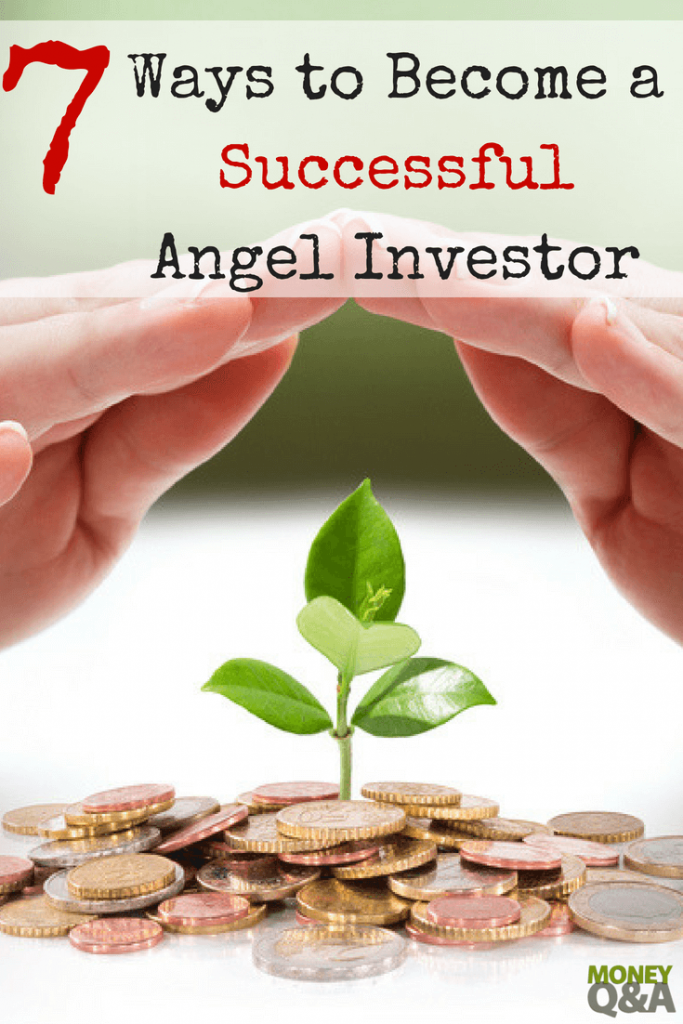The following is a guest post from Jeremy Larner, an angel investor who also runs JKLWorldwide.com, conducting procurement and investment strategies for wealthy clientele in the world of art.
What does a successful angel investor look like? Is it a flamboyant millionaire flying around in private jets? Or is it a savvy investor that makes research based investments following a strategy that facilitates success? For angel investors, the latter is more likely to be true.
Anyone with a large sum of money can be an angel investor. However, being a successful angel is something entirely different. There are accreditation requirements to meet and due diligence to be done.
An aspiring angel needs to know the true anatomy of a successful investor in order to make intelligent decisions that serve as a catalyst for future investments. The following tips serve up professional insight for your own angel journey.
7 Ways to Become a More Successful Angel Investor
Successful Angels are Accredited Investors
There are certain requirements angels need to meet in order to become accredited investors. These include an annual income of $200,000 or more, or be worth at least $1 million. This doesn’t include your main property/home.
Do you absolutely need this to be an angel investor? No. But it is in your best interest since startups get a tax break from the SEC and state governments when receiving funding from an accredited angel.
Successful Angels Know the Risk
To be a successful angel investor, you need to know the risks involved. Not one investment is a sure thing, and starting your angel journey without having the risk at the forefront is a sure fire way to fail.
In fact, only 11 percent of angel investors reported positive returns in their portfolio, according to a Harvard Business School news release. All investments are risky, but a successful angel knows how to mitigate risks by asking a few vital questions:
- How strong is the team I’m investing in?
- Is the startup aiming to solve an important issue?
- Is there a marketplace, and how big is it?
- Is the target audience large enough to market to?
- How long has the startup been at it, and are they having success?
- What are the exit options for the future?
Successful Angels have a Clear Strategy
One of the hallmarks of a successful angel’s anatomy is the strategy. Successful angel investors don’t simply start throwing seed money at multiple startups or entrepreneurs without a plan. If you don’t have a strategy, it’s time to craft one!
Vital investment strategy questions include:
- What industries am I excited about?
- What products and/or services do I love?
- Where have my passions been directed in the last few years?
- How can I put my knowledge to use to help founders grow?
- How many investments can I make per a specific amount of time, and how much?
These are all questions you need to spend a bit of time soul searching on. They can help you develop a powerful investment strategy that you can integrate into your own angel investor DNA.
Successful Angels Invest in What They Know Stay
Part of your investment strategy should incorporate your passions and stick to what you know. Now, this doesn’t mean don’t experiment a bit in other industries, but maybe while starting your angel journey, keep it rather simple.
When angels invest in a startup or an entrepreneur’s idea, they are investing money and insight. You certainly want to see your investment become profitable, and your knowledge of an industry or product/service is valuable to the founder and his or her team.
Successful Angels Invest in People
Another key factor that makes up the anatomy of a successful angel investor is the investment in people. Just like you invest in what you know, you are also investing in the founder and team.
There is a common scenario you may run into on your angel journey. You may come across a mind-blowing, innovative idea with loads of potential, but the founder is simply lackluster in the passion department. Should you invest? Signs point to no.
A successful idea or business often has a passionate, driven founder and team behind it. This makes investing in people far more important than simply funding an idea.
Successful Angels Do Their Homework
High-level research and due diligence are most certainly in a successful angel investor’s DNA. To ensure your money is in good hands, and that you are likely to see a favorable return on investment (ROI), research is a must. In fact, most highly successful angel investors spend 40 plus hours researching potential investment opportunities.
You certainly wouldn’t buy a home without doing a good amount of due diligence. What’s the neighborhood like? Are their good schools in the community? Is property tax high? Is their crime? Are their home repairs needed? What will the neighborhood be like in 10 years? You get the idea. Research any and all opportunities with vigor!
Successful Angels Talk to Other Successful Angels
Going it alone is fine, but it may make your angel journey to success longer and harder. The angel investor community is a small one in comparison, so don’t shy away from seeking guidance, advice, and mentorship from an already successful angel. There are plenty of places to connect with angels, such as networking events, conferences, and even LinkedIn.
Are You Ready to be a Successful Angel Investor?
There is certainly no exact roadmap to becoming a successful angel investor. It isn’t something you’re born with, nor is it something that can be learned overnight. The most successful investors spend countless hours honing their investment skills, often learning from failure more than success.
It is, however, definitely possible to be successful with a little know-how and guidance. Draw from the above tips to get started. What is your angel investor strategy? We want to know.
About Jeremy Larner



